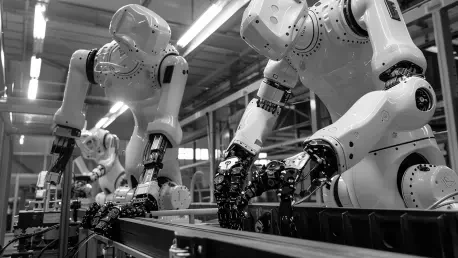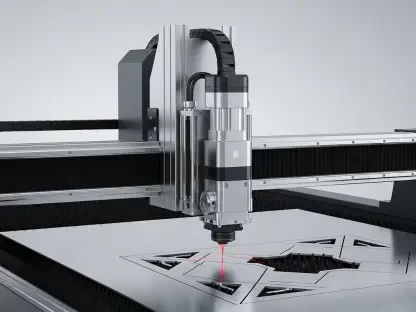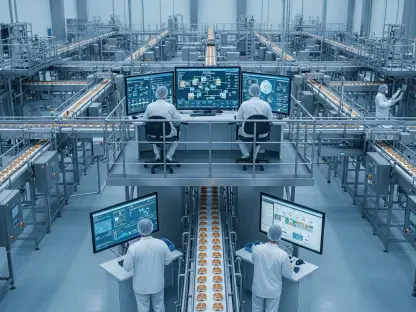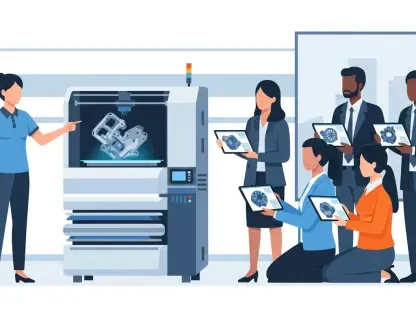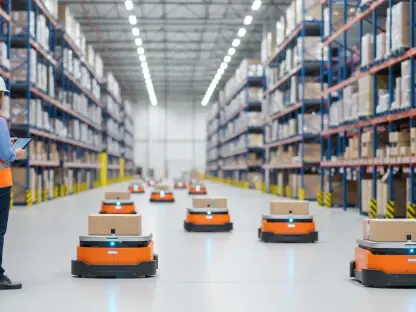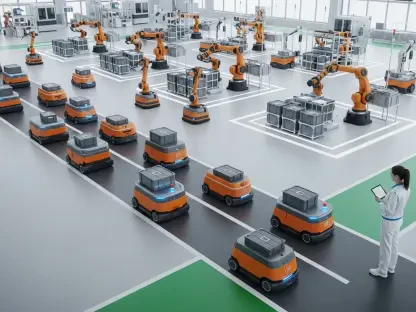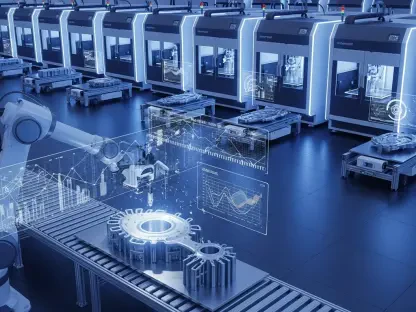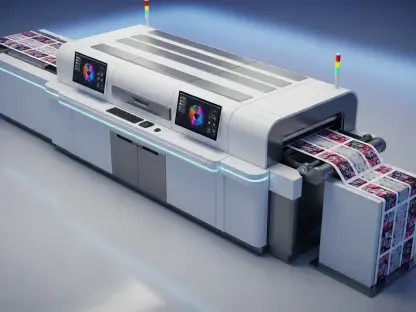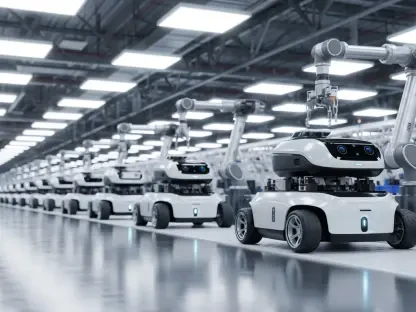In today’s rapidly evolving technological landscape, the increasing integration of automation into various sectors is becoming a defining feature of modern industry. This transformation is strikingly evident in manufacturing and e-commerce, where companies such as Amazon have become pioneers in leveraging robotic technologies. This surge in automation is quantified by the concept of “robot density,” a metric measuring the number of industrial robots per 10,000 human workers within a nation’s manufacturing sector. Germany and South Korea, with 429 and 1,012 robots per 10,000 workers respectively, exemplify high robot density. This trend signifies a seismic shift towards robots potentially equaling or even surpassing their human counterparts in numbers, prompting extensive debates about efficiency, productivity, and the essence of human contribution in a robot-dominant workforce.
Transformation in Manufacturing and E-commerce
The advent of robots in the workforce is reshaping operations in both manufacturing and e-commerce sectors, with Amazon standing out as a key leader. The company has deployed one million robots alongside its 1.5 million human employees to enhance operational efficiency without the constraints of human limitations. Unlike discrete manufacturing tasks, which remain complex and varied, robots often excel in repetitive actions such as order fulfillment and logistics. This distinction highlights the need for a balanced approach to automation, one that integrates physical, software, and cognitive elements as outlined in Forrester’s “automation triangle.” Such frameworks emphasize the importance of harmonizing human adaptability with the precision and consistency that automated systems can offer, ensuring that neither is compromised in favor of the other.
The implications of widespread automation are becoming increasingly apparent as workflow processes evolve to incorporate enhanced robotic capabilities. The shift towards automation raises concerns about management strategies and design. Some organizations are moving towards systems that prioritize robotic efficiency, sometimes at the expense of human adaptability and creativity. This presents a challenge for industries to create equitable designs in workflows that capitalize on the strengths of both humans and robots. The ultimate goal is to foster environments where human ingenuity is valued and utilized, even as robots take on a growing share of tasks. This involves crafting systems where humans can focus on tasks requiring creativity and problem-solving, thus maintaining their significance in an automated economy.
Societal Impact and Future Considerations
The integration of automation into the workforce is not solely an industrial issue but a societal one as well. As robots inch closer to matching human workforce numbers, societal norms and workplace cultures are inevitably impacted. There is an ongoing debate about whether such a shift toward a robot-centric environment is ultimately beneficial, enhancing productivity and efficiency, or whether it risks stifling human potential. This debate is central to understanding how society can adapt to these rapid changes, with technology becoming a staple of everyday work life. The potential for societal shifts calls for a reevaluation of cultural values, especially concerning work ethics, human creativity, and technological integration. Striking a balance between these elements will be critical in ensuring that automation complements human efforts rather than overshadowing them.
The role of organizations like the International Federation of Robotics (IFR) in providing data and insights into these trends is paramount. By illuminating the differences between industrial and service robots, IFR offers a comprehensive view of automation across varied sectors. Such insights are vital in shaping policies and strategies that aim to encourage sensible automation without undermining human roles. Organizations and policymakers must engage in ongoing dialogue to navigate the challenges posed by automation and to design systems that align technological advances with human-centric approaches. This involves acknowledging the intrinsic value of human creativity and problem-solving in industries predominantly influenced by robotic precision and efficiency.
Navigating the Future of Work
The integration of robots into the workforce is transforming operations in both manufacturing and e-commerce sectors, with Amazon being a prominent leader in this charge. The company employs an impressive workforce of one million robots alongside 1.5 million human employees to boost efficiency by overcoming human limitations. Robots excel in routine tasks like order fulfillment and logistics, whereas human workers handle more complex manufacturing tasks. This highlights the necessity for a balanced automation approach that integrates physical, software, and cognitive elements, as explained in Forrester’s “automation triangle.” Maintaining a harmony between human responsiveness and the precision of automated systems ensures that both contribute effectively. As automation spreads, concerns arise over management and design strategies, with some prioritizing robotic efficiency over human adaptability and creativity. Industries face the challenge of creating equitable workflows, maximizing the strengths of both humans and robots. The goal is to design systems that allow humans to focus on creative, problem-solving tasks, maintaining their value in an increasingly automated economy.
